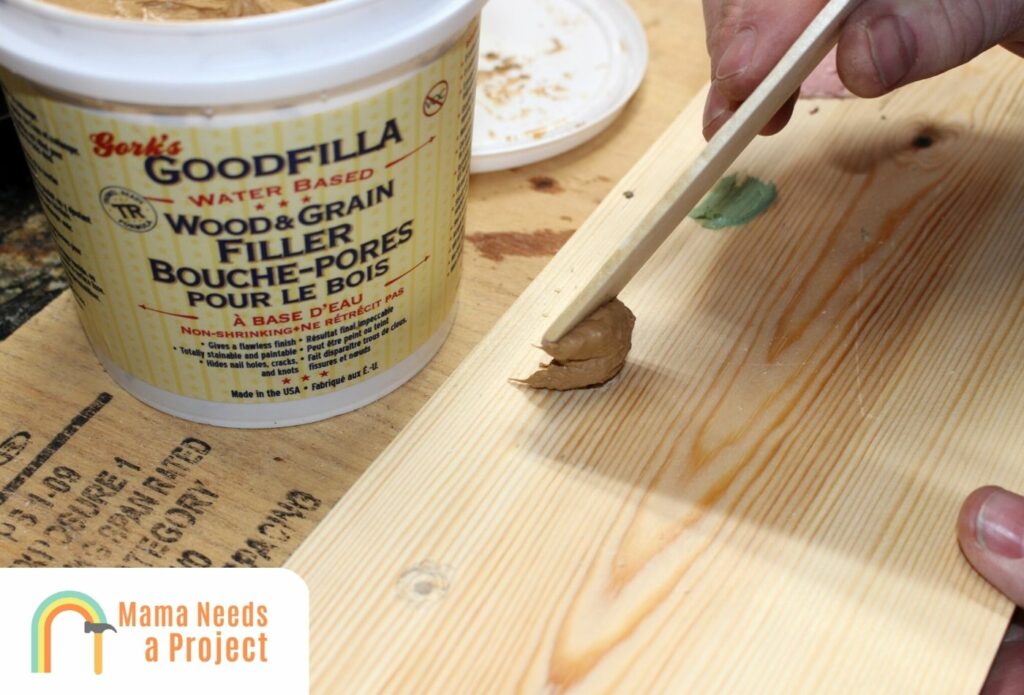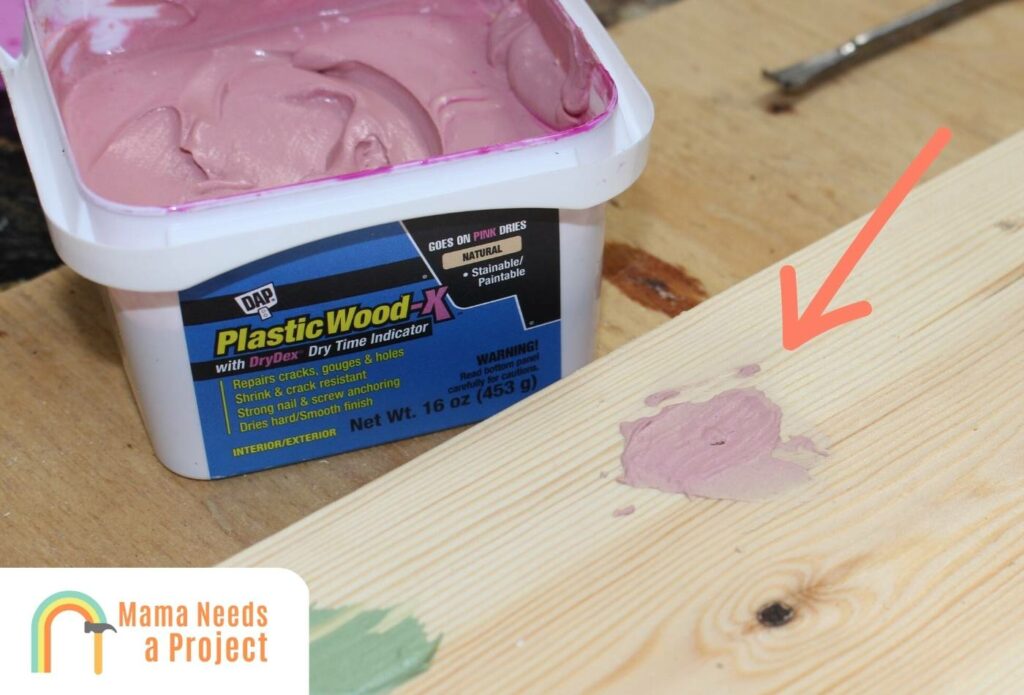How Long for Wood Filler to Dry? (Tips & Tricks)
Wood filler is an essential for every woodworker and DIYer.
I’ve used it countless times to repair cracks and chips in my wood projects, but it has plenty of other use cases as well.
But there’s one key step you cannot rush – letting it dry.
If you don’t let it dry before sanding or painting – your might have to restart from the finish which is extremely frustrating.
So, how long does it take wood filler to dry?
I’ll answer this question and much more! Let’s dig in!
How Long Does it Take Wood Filler to Dry?
Once applied, it usually takes wood filler 30 minutes to develop a semi-hard outer layer. To harden completely, wood filler usually needs five to six hours.
Since it doesn’t take long for a thin, semi-hard layer to develop after wood filler has been applied, you need to be quick when using wood filler.
But wood filler’s relatively quick drying time means you won’t have to wait all that long for a hard, thick layer to develop.
The Two Main Kinds of Wood Fillers
The two main types of wood fillers are water-based wood fillers and oil-based wood fillers.
Water-based wood filler generally dries in under an hour, while oil- based wood filler can take upwards of six hours to dry completely.
After you apply some water-based wood filler, you need to wait a few minutes before more can be applied.
When applying oil-based wood filler, give each layer at least 20 minutes of drying time before you apply more.
Why Water-Based Wood Filler Dries Quicker Than Oil-Based
Water-based wood filler is usually made with wood fibers, cellulose, or gypsum, and it can be easily diluted.
The more diluted water-based wood filler is, the quicker the drying process will be. In some instances, diluted water-based wood filler dries in under 15 minutes.
Oil-based wood filler is thicker and therefore takes longer to dry. But its thickness makes it more resistant to humidity, weathering, sun damage, etc – so some people prefer it.
Water-Based Wood Filler or Oil-Based?
Wondering if you should go with a water based or oil based option? Here’s what to look for.
Do you need the wood filler to dry quickly? If so, choose a water-based wood filler. These are cheaper and they dry quickly.
If you need exterior finished wood to be durable all the way through, using oil-based wood filler is the way to go. Just know that these fillers are more expensive and it takes a lot longer to apply them.
Oil-based fillers’ slow drying time may seem like a downside, but it actually makes these fillers easier to apply.
And since the application process is easy, it’s likely you’ll be able to get the filler exactly where it needs to go on the first try.
How Long Does it Take Wood Putty to Dry?
When comparing wood filler vs wood putty, there’s plenty of things to consider. One of which is drying time.
Wood putty dries but never hardens. And because it never hardens, it’s able to easily expand and contract with the wood surface it’s applied to.
It generally takes two to eight hours for wood putty to dry. As it dries, it becomes less malleable.
Wood putty’s malleable nature comes from its makeup. It’s made using a pliable synthetic resin, and unlike wood filler there’s no sawdust or pulverized wood byproducts in wood putty. In other words, wood putty isn’t made with any solidifiers.
Wood putty can be hardened if a hardener is applied to it, but adding this component extends the drying process by at least a few hours.
Does Oil-Based Wood Putty Dry Faster Than Water-Based Wood Putty?
No, oil-based wood putty doesn’t dry faster than water-based wood putty.
Oil-based wood putty, however, is the wood putty most people use, even though it can take 12 hours to reach its hardest state.
Water-based wood putty is also easier to sand, and it’s usually sandable around 30 minutes after it’s applied.
Wood putty that’s water-based is better for indoor applications, which is why you’ll see this used to mend cabinets, doors, tables, molding, and wood paneling.
Oil-based wood putty is for the most part used outside because it’s stronger and more weather-resistant.
Its durability is improved when a hardener is applied, but if you’re in an area where the temperature fluctuates widely year round, it’s better to use non-hardened wood putty, as this way you won’t have to worry about expansion and contraction during summers and winters.
Factors That Determine Drying Time
A variety of factors collectively determine how long it takes wood fillers to dry. Some of the key factors are composition, temperature, humidity, and the number of layers.
Composition
Wood filler’s composition in large part determines how long it takes wood filler to dry.
If your wood filler is made with epoxy resin, it’ll take longer to dry than one that’s water-based. And if your wood filler is mineral-based instead of sawdust- or wood fiber-based, expect a longer drying process.
Because of its composition, DAP’s “plastic wood” wood filler usually takes six to seven hours to completely dry. This is a thicker filler, which explains the longer drying time.
Wood filler that’s diluted with water, especially water-based wood fillers, will dry faster because of the high water concentration.
Temperature & Humidity
The temperature where the wood filler is drying is relevant, as well as the humidity.
If it’s too hot or too cold, the drying process may be slowed or prevented altogether.
And if it’s too humid, you may have a problem with oil-based wood filler, as excessive humidity can elongate the drying process.
Some people think that if you apply thick layers of oil-based wood filler these will offset suboptimal temperature and humidity levels, but such isn’t the case. Instead, it’s best to simply wait for favorable, moderate temperatures before applying wood filler of any kind.
Number of Layers
How many layers of wood filler you apply is relevant as well.
If multiple layers are needed to fix the flaw in the wood’s surface, expect the drying process to take longer.
Even though it may take many thin layers of water-based wood filler to fix a wooden surface, these layers dry quickly, meaning the overall drying time isn’t all that long. Layers of oil-based wood filler, on the other hand, take longer to dry, though you may only need to apply one or two layers.
In the time it takes one layer of oil-based wood filler to dry, multiple layers of water-based wood filler can dry.
Weather (Exterior Wood Filler)
Certain kinds of weather impact how long it takes exterior wood filler to dry.
For example, if it starts to rain while your wood filler is drying, this could elongate the process or prevent it from completing.
Also, be sure to stay away from direct sunlight as this can cause problems when wood putties or fillers are drying.
How Can I Make Wood Filler Dry Faster?
If you want to expedite the wood filler drying process, ensure that there’s good air circulation in the area where the wood filler is drying. Have a floor fan running nearby, and keep the windows open to ensure good air circulation.
You don’t want to use a heat gun or a hair dryer to expedite the drying process, as applying direct heat in this way can damage the wood filler and prevent it from drying properly.
How Can I Make Wood Putty Dry Faster?
For one, if you adequately sand around the area you intend to apply putty to, this means you won’t have to use as much putty. The smaller the amount used, the quicker it dries. You can either sand by hand or use a power sander to accomplish this.
Using a fan is also a good move if it’s humid. This will help take the moisture out of the air, expediting the wood putty drying process.
You could also apply a hardener, but this may reduce the lifespan of the putty, so it’s best to refrain from doing this if you’re just trying to speed up the drying process.
You should also make sure the wood’s surface is clean and dry before you put the putty on. If the putty adheres well right away, it’ll dry quicker.
FAQs
Does wood filler dry as hard as wood?
Wood filler will become pretty hard when completely dry, but it won’t be as hard as hardwood. It can, however, be as strong as plywood and some softwoods.
You actually want your wood filler to be somewhat flexible so it can contract and expand with the wood. If it’s too stiff, it’ll crack and chip easily.
How long does wood filler take to dry before sanding?
You should give water-based wood filler at least a half hour to dry before you sand it. Be sure to sand lightly, as too much pressure may take off the thin layer of wood filler if it hasn’t cured.
If you’re using oil-based wood filler, you should wait several hours before sanding. Once oil-based wood filler is dry, you can sand without having to worry about taking it off, as once this has solidified it’s pretty tough to break down.
If you’re going to be sanding by hand, it’s best to give oil-based wood filler at least five hours to dry. If you’re sanding with an electric sander, you should give the filler at least seven hours to dry.
How long does wood filler take to dry before painting?
Depending on the type of wood filler used, it can take anywhere from 30 minutes to a few hours before the surface is ready to paint. Also check the manufacturers directions for the best results.
Final Thoughts on How Long for Wood Filler to Dry
Water-based wood filler usually dries in a half hour to an hour. Oil-based wood filler, on the other hand, usually dries in six to seven hours.
Before you sand, stain, or paint fresh wood filler, touch it with your finger or with a dry cloth. If you feel wet filler, it still needs time to dry. Only after it’s completely dry should you sand, stain, or paint it.



